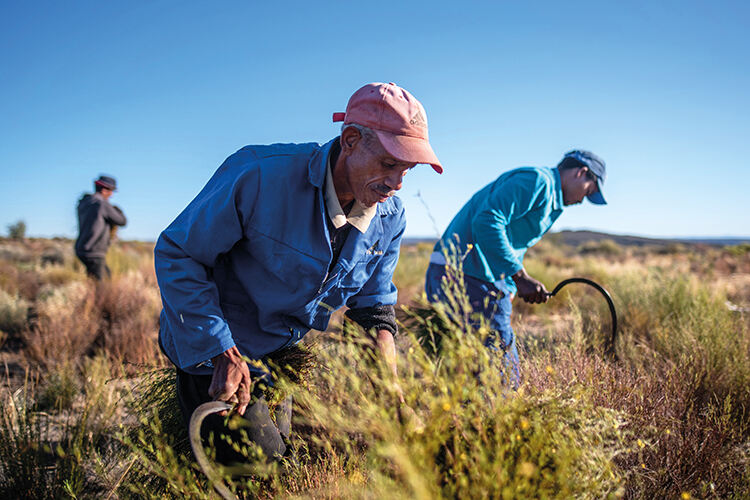
South Africa’s Khoisan people have long been marginalised and landless. But now, a historic benefit-sharing agreement for the money generated by rooibos is offering a step in the right direction
Words and photographs by
When Barend Salomo was a boy in South Africa’s Cederberg Mountains, his father would take him on walks through the rugged terrain to teach him about local flora and fauna. By the time he reached his teens, he knew which plant’s roots would cure diarrhoea, which bush could be used to stave off stomach cramps and which leaves worked as a natural insect repellent. He even learned how to predict rain from the behaviour of the area’s free-roaming goats. Salomo belongs to the Khoisan people, the region’s earliest inhabitants, who’ve survived on this kind of knowledge for thousands of years.
In his father’s early lessons, one plant always stood out. Acid green with wispy stems and slender leaves, rooibos seemed to be the answer for everything. Steaming cups of rooibos tea accompanied every meal in the household. Babies were weaned on it. When the children fell sick, his parents used it as a medicine, and he learned how it could work wonders in treating even the most severe rashes and eczema.
‘It’s been a part of our lives for generations,’ says Salomo, who now runs a cooperative of Indigenous rooibos farmers in the village of Wupperthal, in the heart of the Cederberg Mountains. ‘It’s a part of our heritage.’
Since South Africa’s transition to democracy in 1994, the global rooibos industry has exploded, spurred on by increasing awareness of its purported health benefits. Yet until now, the Khoisan (a term that refers collectively to several Khoi and San peoples), who are among the country’s most marginalised groups after centuries of colonisation and apartheid, have seen precious little benefit from the plant their ancestors discovered. Already landless by the time rooibos was first commercialised in the early 20th century, they were sidelined as the industry grew, their role typically restricted to working as labourers on white-owned farms or selling wild-harvested rooibos to processors for a pittance. As Salomo grew older, he began to see the plant as a symbol of all the things his beleaguered people had lost.
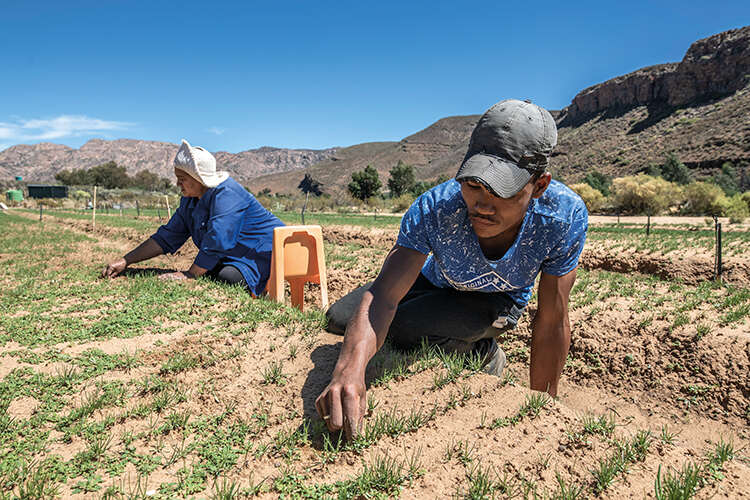
Now, at long last, that’s beginning to change. After a string of recent developments in the world of rooibos, rounded off by the signing of an unprecedented benefit-sharing agreement with the country’s rooibos industry, the plant that for so long stood as an emblem of the Khoisan’s disenfranchisement could now become a catalyst for change. ‘We had to really fight with the industry for this deal,’ says Salomo, who took part in the often fractious negotiations, which dragged on for nearly a decade. ‘They saw money in the product, but we saw our heritage.’
As he talks, six men dressed in red and blue uniforms with white Wellington boots use shovels to spread out a thin layer of freshly harvested rooibos on a concrete courtyard outside. The leaves, green when cut, have already begun to ferment, taking on the rich rusty hue that gives the plant its name – in Afrikaans, rooibos translates as ‘red bush’. Soon, they’ll be shipped on for secondary processing before ending up in teabags, health products and cosmetics around the world.
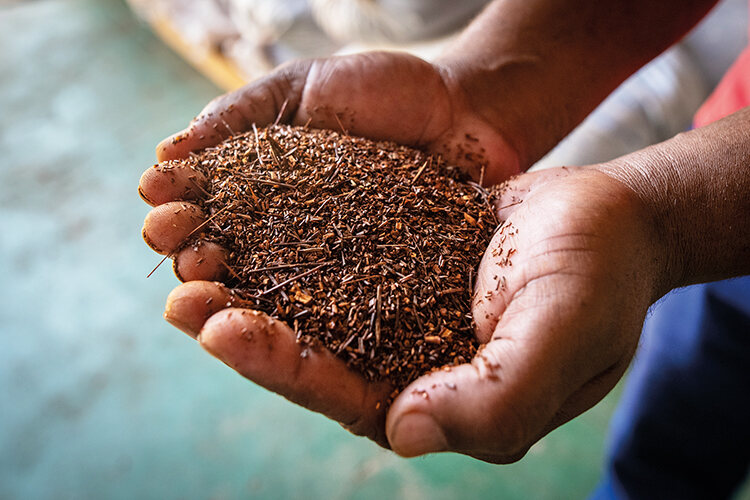
In recent years, there has been increasing awareness of the moral obligation for companies to compensate indigenous peoples for the commercialisation of their traditional knowledge’ and ‘genetic resources’. Yet the Khoisan rooibos deal marked the first time an entire industry has ever agreed to share benefits with an indigenous group. Under its terms, the industry formally recognised for the first time the Khoisan’s role in the origins of the trade and committed to share a sum of money equal to 1.5 per cent of the country’s total annual production of unprocessed rooibos.
‘South Africa is being seen as a pioneer in access and benefit sharing,’ says Amelia Heyns, a lawyer for Natural Justice, a non-profit that first began supporting the Khoisan during a disagreement with Western pharmaceutical companies over another local plant, the hoodia. ‘It’ll be a catalyst for other agreements to follow.’
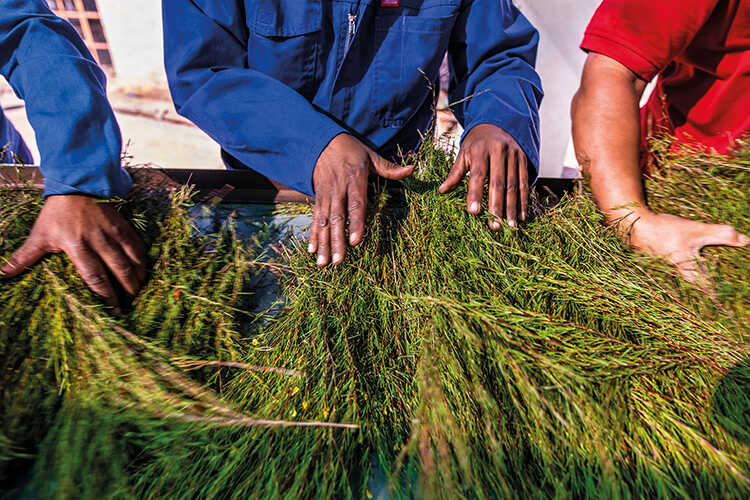
The rooibos deal has come at an opportune moment. Over the past few years, the antioxidant-rich, caffeine-free beverage has become a staple item on the menus of cafés and restaurants around the world. At the same time, demand for rooibos extract for use in health products and cosmetics has soared, with A-list celebrities lining up to champion the plant’s qualities. Exports from South Africa are roughly 18 times higher today than they were in 1996 – enough to fill a few billion teabags.
Certification schemes for ethical and biodynamically farmed products have added value to the harvest of small-scale rooibos farmers. And in 2021, after a slew of spats with foreign companies trying to trademark the rooibos name or take out patents on medicinal uses of the plant without the necessary permission, rooibos became the first African commodity to receive Protected Designation of Origin status from the EU. This meant that the term can only be used for rooibos grown in this specific part of South Africa, giving the crop a further boost. ‘In the past, you had to just grow it for the love of it,’ says Salomo. ‘Now, it’s starting to become sustainable.’
The job of distributing the benefit-sharing money among the Khoisan is still ongoing. The first payment of around 12 million Rand (nearly half a million pounds) was transferred into two trusts representing the Khoi and the San respectively in 2022, with two more payments of a similar amount since. But the needs are enormous, and with Khoisan descendants scattered throughout the country, getting the money to where it’s most needed is proving a major challenge. Five years after the deal was signed, the funds still sit in bank accounts.
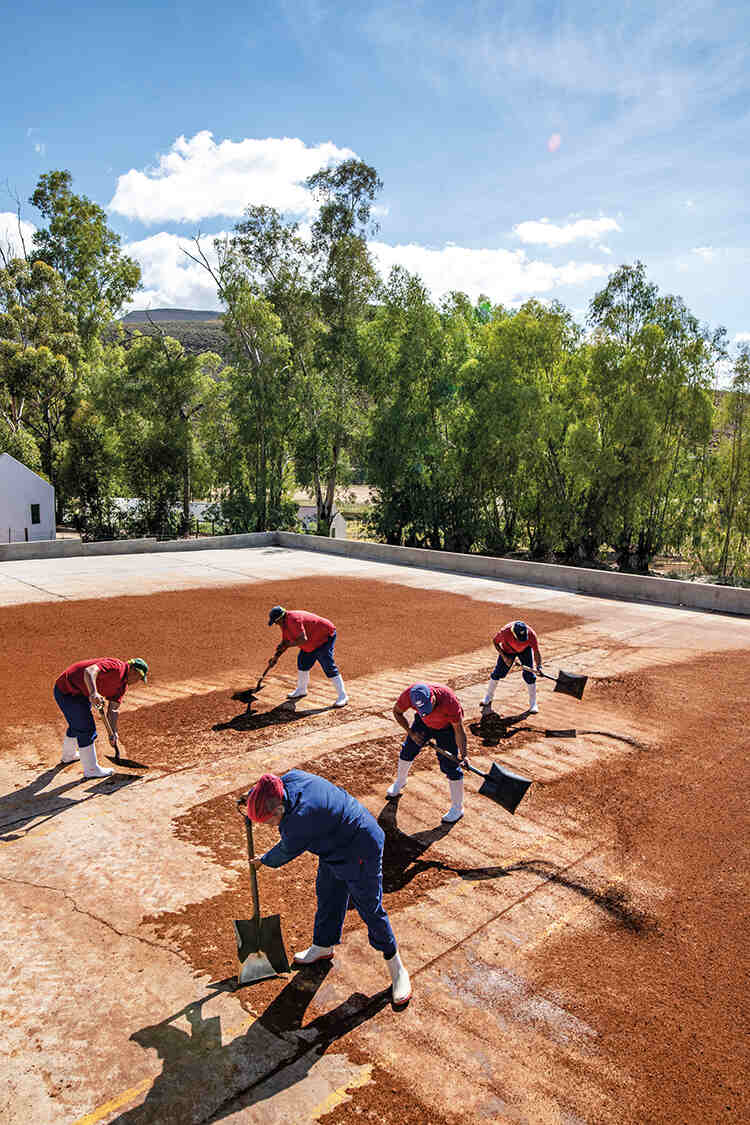
‘The recognition means a lot. It was a proud moment for us,’ said Chantal Revell, a Khoi princess and member of the KhoiKhoi Biodiversity Trust, one of the bodies responsible for dispersing the rooibos funds. ‘But the general feeling is that 1.5 per cent is too low. Our communities have been left behind. They’re living in such poverty. It will take years to see just one community uplifted.’
A part of the challenge facing the KhoiKhoi Biodiversity Trust is that many Khoisan descendants are not even aware of their ethnic origins. During apartheid, the Khoisan were forced to register as ‘Coloured’, along with millions of other South Africans who didn’t fit neatly into the categories of black or white. It was a designation that effectively negated their ethnicity and did untold damage to Khoisan identity. As South Africa’s Human Rights Council noted in a 2016 report, ‘These peoples were systematically denied recognition as a people of equal worth and value… and became virtually invisible as a distinct group.’
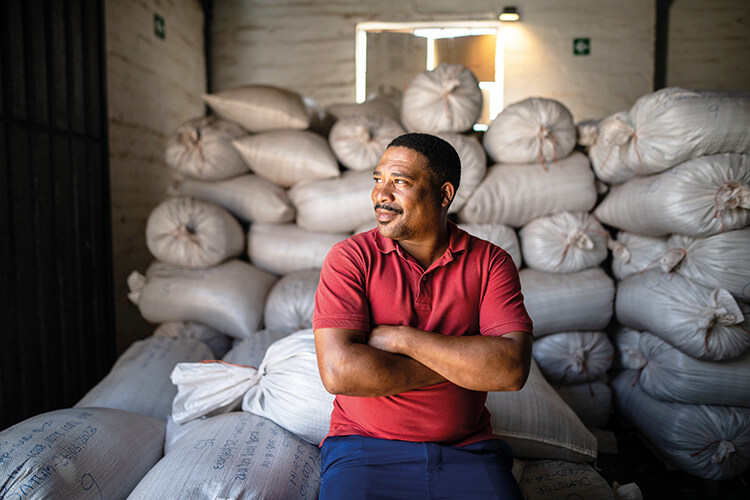
In the three decades since the end of apartheid, a movement of ‘Khoisan revivalism’ has grown, yet progress has been extremely slow. The Khoisan are
still not officially recognised as the country’s ‘First Nations’; not one of their languages is among the country’s 11 official languages; land restitution on any significant scale has proved elusive; they still lack effective political representation; and their culture remains deeply marginalised.
This is precisely why the rooibos agreement, leaving aside differences of opinion on the fairness of the deal, is so significant. As Revell puts it, ‘It’s an affirmation of our connection to the land. It proves that we’re a people with a proud culture and a history. It’s a start, and we’re hoping to build on it.’
Because the benefit-sharing money is earmarked for the Khoisan as a whole, not just those farming rooibos, much will be spent on community projects in other parts of the country, but Revell says that some of the money will also help to secure land for Indigenous rooibos farmers in the Cederberg Mountains.
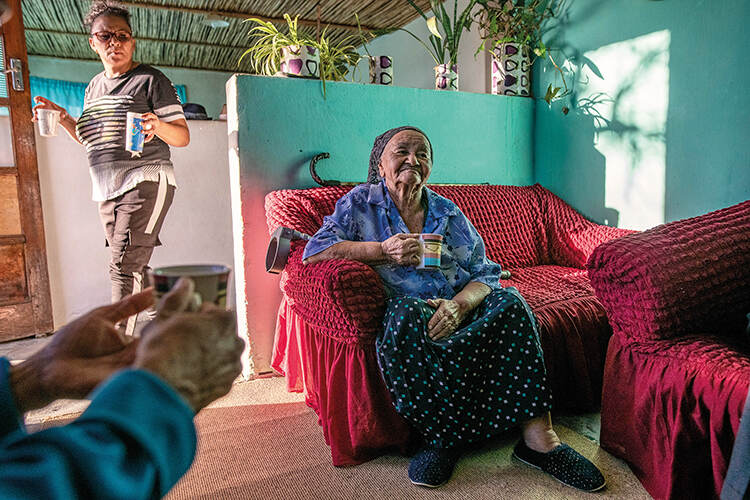
‘We’ve got Khoi communities that have been farming for generations but they’re having to rent their fields from the church after the land was taken from their forefathers,’ says Revell. ‘And we want to train other young people to get them back into agriculture, back to the land.’
The 77 farmers of Salomo’s cooperative all rent their plots from the Moravian Church, which owns some 14,500 hectares of mountainous terrain around Wupperthal, along with the town itself and all of their homes. It puts them in an awkward position, unwilling to invest too heavily or plan for the future without the certainty of knowing that their fields, or even their processing facility, will still be accessible in five years’ time.
‘The irony is that even though we’re the “traditional knowledge holders” of rooibos, we still don’t own the land where it grows,’ says Salomo, who sees the rooibos deal as just one part of an epic struggle to restore the status of the Khoisan. ‘Our forefathers roamed all over this land, but we’re still landless.’
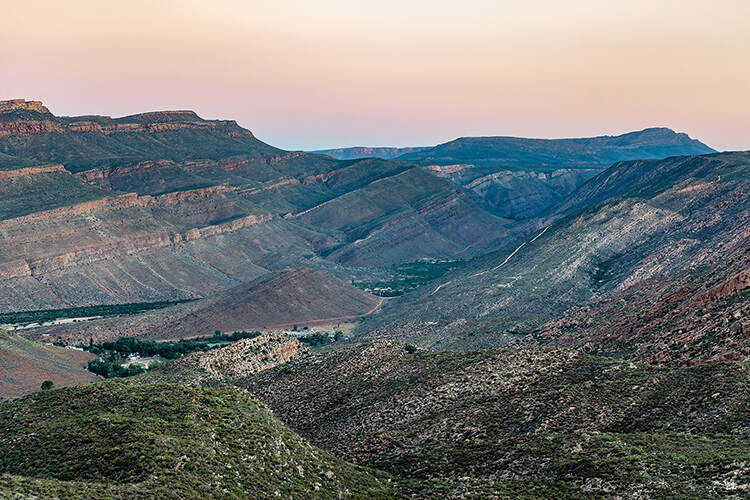
Scattered throughout the Cederberg Mountains are some 2,500 pieces of Khoisan rock art that emphasise his point. The paintings, which largely depict human figures and animals now extinct in the region, are daubed in shades of orange nearly identical to the colour of fermented rooibos, and he wonders whether that’s where his ancestors derived their pigments. Either way, for Salomo, they’re all intertwined – the land, the rooibos, the art, his people’s identity.
High up on a mountain plateau dotted with plots of rooibos, Salomo looks on as a group of farmers from his cooperative work to bring in the last of the year’s harvest. They walk quickly along the rows of plants, cutting them off at around knee-height with a single sharp motion of their scythes. They bundle up the stems and stuff them into sacks before loading them onto a trailer that will trundle down a rocky mountain track to Wupperthal in the valley below.
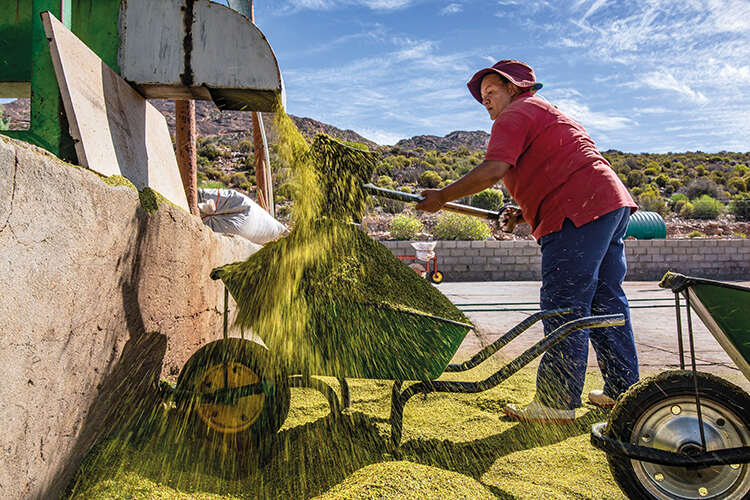
‘Rooibos is famous now,’ says Brashly Hudoen, who says the money he’s made from rooibos in recent years has enabled him to buy more livestock and put away some savings. ‘People are drinking it all over the world. It makes me feel like a big boss.’
The year’s crop has suffered somewhat from erratic weather – a growing concern for the farmers here – but the prices are good, and for the most part, the cooperative’s members are happy. With the benefit-sharing money poised to start flowing into Khoisan communities around the country, and with the rooibos boom showing no signs of slowing down, there is a sense of optimism that better times lie ahead.
‘It will take a long time to get where we want to be,’ says Salomo. ‘But we’re excited to start building our future.’



